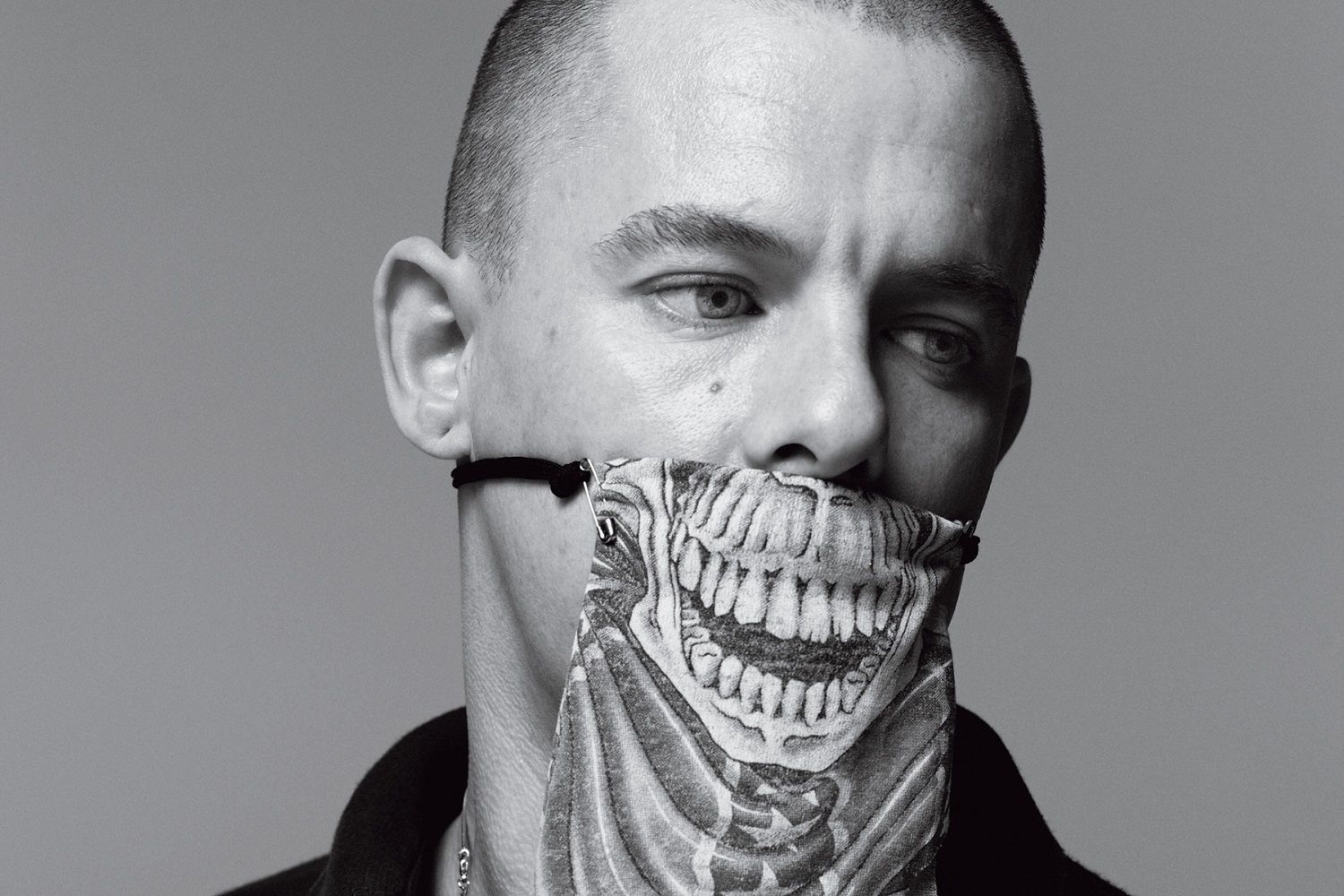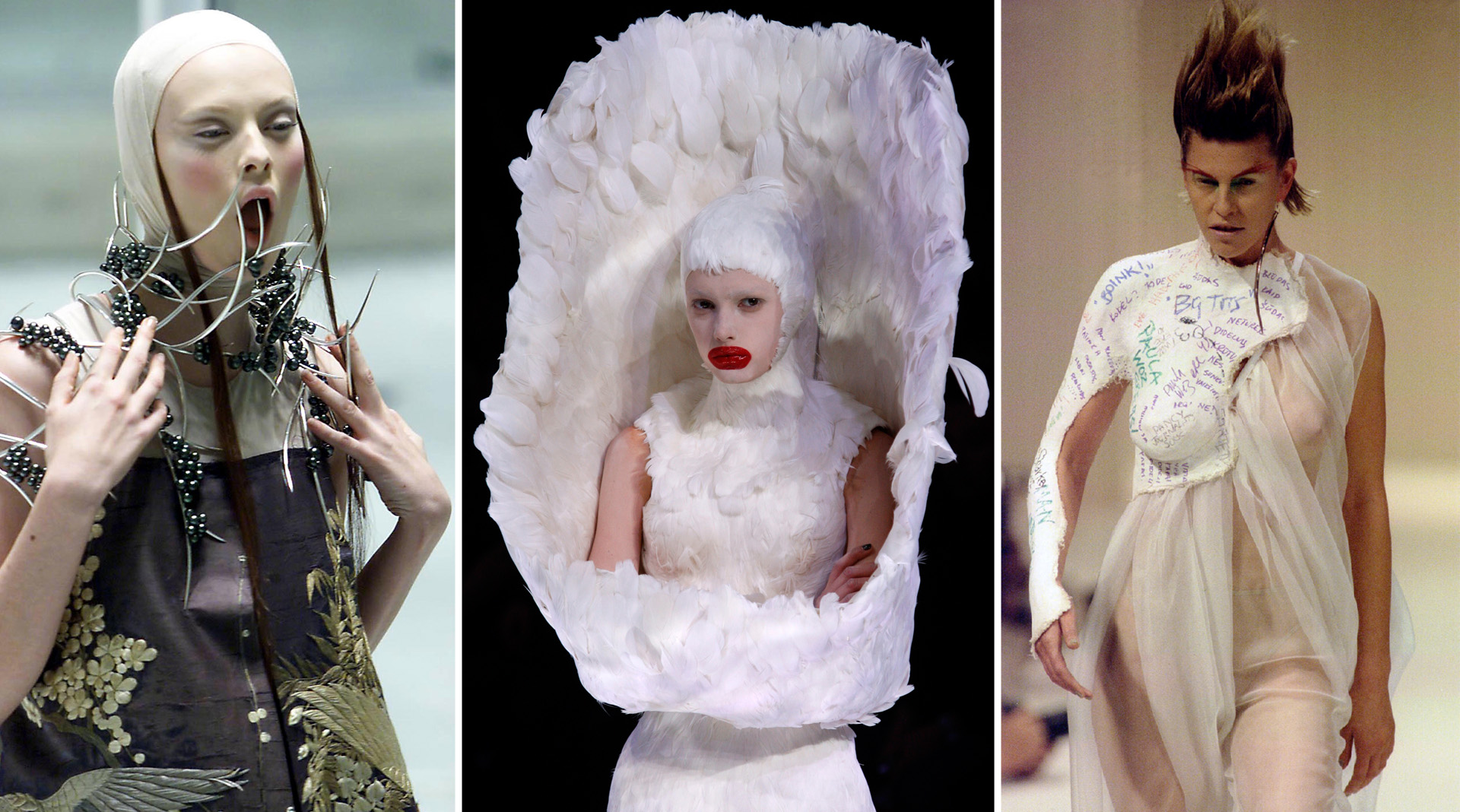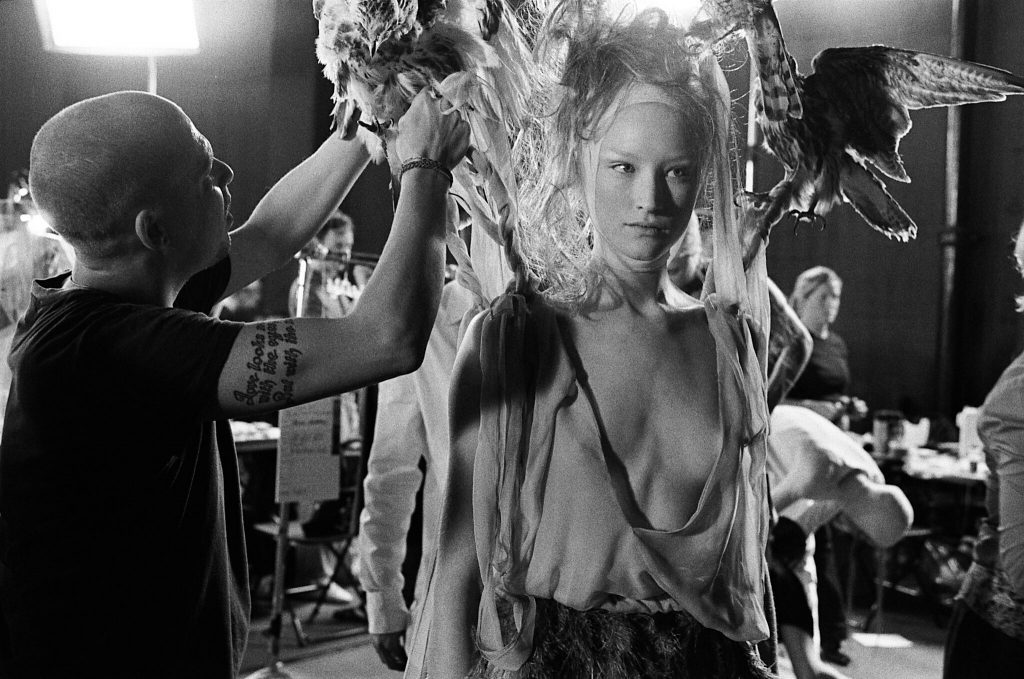
Alexander McQueen
Iconoclastic and fabulously talented designer and artist Alexander McQueen is the subject of the new documentary McQueen from Ian Bonhôte and Peter Ettedgui. McQueen’s real life rags-to-riches story, his shining star blazing across the fashion universe and acceptance as an international force appeared to have fulfilled his East End London boyhood dreams. He recreated fashion for a new age, blending street art, the luxe look of the Old Masters and the macabre as driving forces. In 2010, at age 40, McQueen died of suicide by hanging in a tragic endnote to a brilliant career. McQueen is a staggering work of art in itself, mirroring McQueen’s extreme imagination and love of colour. It is a commemorative work of art, a fitting tribute and without a doubt one of the best fashion docs I’ve seen. We spoke with the filmmakers.
[youtube url=”https://www.youtube.com/watch?v=4OjX3ZbsfbU” width=”500″ height=”300″]
Peter – I have to say I came off making Marlon Brando film (Listen to Me Marlon) and after that I was depressed thinking I’m never going to find as good a subject again. But McQueen was always in our peripheral vision. Both of us like grew up in his London, his influence was everywhere around you. When we first came together to talk about making it, we realized it was a complete story of a man and a story that could take you on an incredible immersive ride. We were never making a fashion film. It was about someone working in the fashion industry.
McQueen used breathtaking imagery, much of it dark. His trademark skulls and reminders of death are powerful.
Ian – Yes the skulls have been a motif from the beginning in his career. One of our contributors says he was attracted to the macabre, not death. In one scene he wore skulls out on the catwalk. Lots of designers dress up to look good but Lee didn’t think about how you look but how you feel. Those skulls were especially cinematic and visually enhancing for the documentary. We could use them almost as a metaphor to what he was saying.

Alexander McQueen
Peter – Lee wanted the skull to represent itself and to balance the light and darkness. We did the same; we go into dark moments but bring it back to light moments. We allow the audience to go on an emotional journey with an emotional palette that revealed his psychology. We took our cues from him. He always said if you want to know who am look at my work. We took him at his word and tell the story through the work and individual shows. The other thing he said was if my shows aren’t emotional, I’m not doing my job properly. It’s rare that fashion designers think in that way. That was his MO. We had to make a film that was if possible as expressive as he allowed.
[youtube url=”https://www.youtube.com/watch?v=bO0Gx3E3KJA” width=”500″ height=”300″]
It’s clear in the film that he remained the kid from a small town despite his power and money and influence.
Peter – He was an outsider and the fashion industry and that exciting and strange bubble. His family wasn’t involved and the fact we have a protagonist outside that world, he couldn’t have been further away from his East End background. It allows the audience to expose the hand that takes him into that world, a way in.
His suicide still comes as a shock. Is this a cautionary tale?
Ian – We were showing that we are all fragile beings. We can appear successful to the outside world and strong human beings and we look at the effect on us. We accept more and realize that with mental illness we don’t have to be born with it. Sometimes it comes out in time. I like the subplot of that in the documentary, but we set out to lift up the audience. Otherwise it’s too haunting and dark and miserable and I don’t like that. We have to carry on. He needed more help than he got.
He had a big personality, was he the same when cameras weren’t rolling?
Peter – He had an immense personality and he took responsibility and made decisions including his own death. I think what is important in a sense, is the pitfalls and the insane stress and pressure of the fashion industry. It’s a treadmill when you have to put out two seasonal collections but when you’re doing 12 – 14 collections a year… It’s an aspect of the fashion world. Jodie Kidd says it in the documentary, in the industry you always have to be on, always radiate positiveness. It’s not an industry that allows weakness and darkness and so on.
Ian – It’s true in a lot of creative industries, people don’t want to hear you complain every five minutes, they want the positive side. Again, he was human and some crazy people fall in love with the lifestyle. He was close to his family, he was born with not much and he always felt it. He says everything is bullshit, except the important things in life. The important thing to him was the work. Not how people perceived him or the media.

Alexander McQueen
Your footage of him towards the end is alarming.
Peter – I think what’s interesting and I ask myself what happened that somebody who so happy at the beginning and you see him at the end he’s thin and not happy. Like he aged 20 years overnight. I can’t help feeling he stayed close to his family. Dealing with celebrity pressure pulled him away from his home and some days he could deal and others he didn’t. He made decisions in dark and light circumstances. I believe sadly some decisions cannot be overturned, but they are decisions that more responsible elements wouldn’t accept.
by @annebrodie
BFCA BTJA AWFJ TFCA FIPRESCI